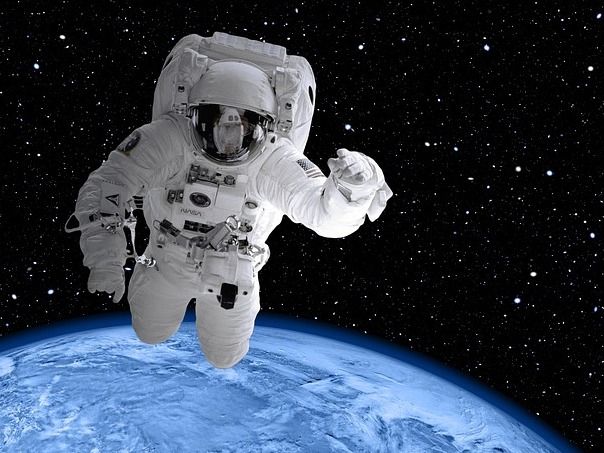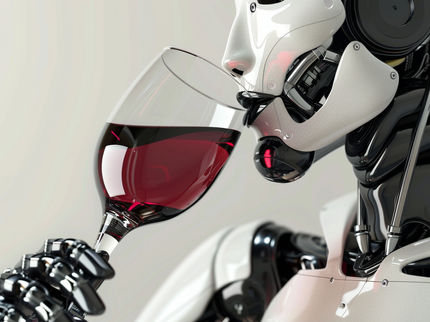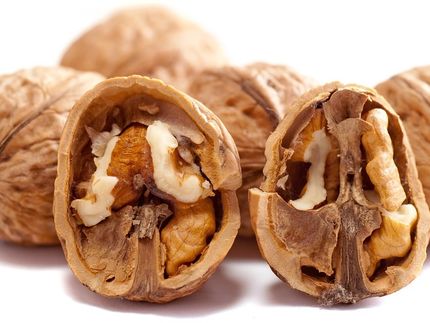Microbes may help astronauts transform human waste into food
Human waste may one day be a valuable resource for astronauts on deep-space missions. Now, a Penn State research team has shown that it is possible to rapidly break down solid and liquid waste to grow food with a series of microbial reactors, while simultaneously minimizing pathogen growth.

geralt/ Pixabay
"We envisioned and tested the concept of simultaneously treating astronauts' waste with microbes while producing a biomass that is edible either directly or indirectly depending on safety concerns," said Christopher House, professor of geosciences, Penn State. "It's a little strange, but the concept would be a little bit like Marmite or Vegemite where you're eating a smear of 'microbial goo.'"
The researchers' study addresses multiple challenges facing deep-space missions to Mars or beyond, which would likely take months or years. Bringing enough food from Earth takes up volume and increases the mass and fuel cost of the spacecraft, while growing food in route using hydroponic or other methods would be an energy- and water-intensive process that takes up valuable room.
To test their idea, the researchers used an artificial solid and liquid waste that's commonly used in waste management tests. They created an enclosed, cylindrical system, four feet long by four inches in diameter, in which select microbes came into contact with the waste. The microbes broke down waste using anaerobic digestion, a process similar to the way humans digest food.
"Anaerobic digestion is something we use frequently on Earth for treating waste," said House. "It's an efficient way of getting mass treated and recycled. What was novel about our work was taking the nutrients out of that stream and intentionally putting them into a microbial reactor to grow food."
The team found that methane was readily produced during anaerobic digestion of human waste and could be used to grow a different microbe, Methylococcus capsulatus, which is used as animal feed today. The team concluded that such microbial growth could be used to produce a nutritious food for deep space flight. They reported in Life Sciences in Space Research that they grew M. capsulatus that was 52 percent protein and 36 percent fats, making it a potential source of nutrition for astronauts.
Because pathogens are also a concern with growing microbes in an enclosed, humid space, the team studied ways to grow microbes in either an alkaline environment or a high-heat environment. They raised the system's pH to 11 and were surprised to find a strain of the bacteria Halomonas desiderata that could thrive. The team found this bacteria to be 15 percent protein and 7 percent fats. At 158 degrees Fahrenheit, which kills most pathogens, they grew the edible Thermus aquaticus, which consisted of 61 percent protein and 16 percent fats.
"We also explored dramatic changes to how much waste was produced, for example, if the spacecraft had a larger load than usual, and the system accommodated that well," said House.
The team's compact design drew inspiration from aquariums, which use a fixed-film filter to treat fish waste. These filters use a specially designed, bacteria-covered film material with high surface area.
"We used materials from the commercial aquarium industry but adapted them for methane production," said House. "On the surface of the material are microbes that take solid waste from the stream and convert it to fatty acids, which are converted to methane gas by a different set of microbes on the same surface."
The team removed 49 to 59 percent of solids in 13 hours during their test. This is much faster than existing waste management treatment, which can take several days. House said their system is not ready for application yet — this initial study explored the various components in isolation and not a fully integrated system.
"Each component is quite robust and fast and breaks down waste quickly," said House. "That's why this might have potential for future space flight. It's faster than growing tomatoes or potatoes."
Today, astronauts aboard the International Space Station recycle a portion of water from urine, but the process is energy intensive, said House. Solid waste management has been a bigger hurdle. This currently is ejected into the Earth's atmosphere where it burns up.
"Imagine if someone were to fine-tune our system so that you could get 85 percent of the carbon and nitrogen back from waste into protein without having to use hydroponics or artificial light," said House. "That would be a fantastic development for deep-space travel."
Two additional researchers collaborated on this work: Lisa Steinberg, postdoctoral astrobiology researcher at Penn State at the time of the study, now a science lab supervisor at Delaware County Community College; and Rachel Kronyak, former Penn State undergraduate geosciences student, now a graduate student at the University of Tennessee.
This work was funded by NASA through the Ralph Steckler/Space Grant Space Colonization Research and Technology Development Opportunity and by the Penn State Astrobiology Research Center through the NASA Astrobiology Institute.





























































